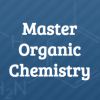Some good news—if you took General Chemistry, this class starts out with a bunch of topics that should be a review. Even better news—if you did well in General Chemistry, these first few topics will be relatively easy. You’ll notice, as you progress in Organic Chemistry, that new topics will be built off of the previous ones. So, we’re going to start with some relatively simple stuff and work our way up from there.
The topics we’ll cover in this section are going to be concepts such as valence, Lewis structures, formal charge, condensed structural formulas, geometry, hybridization, and resonance. Hopefully, a few of these, if not all of them, should sound pretty familiar—you probably have at least a basic idea what these are. If not, don’t worry—you should be able to learn these topics without too much trouble.
Essentially, your goal for this section should be to have a strong understanding of
- what molecules look like in 3D space,
- different ways we can represent these molecules on paper,
- how lone pairs and electrons interact and move to create formal charges and resonance structures.
A huge part of Organic Chemistry deals with structures of molecules, and if you master these three topics, you’re on your way to understanding a lot of Organic Chemistry.
When dealing with resonance structures, draw out all of the atoms in the molecule, including Hydrogens. Remember that only lone pairs and bonds are allowed to move. You can never move atoms, especially Hydrogens. That’ll come in handy a lot when dealing with resonance problems.







